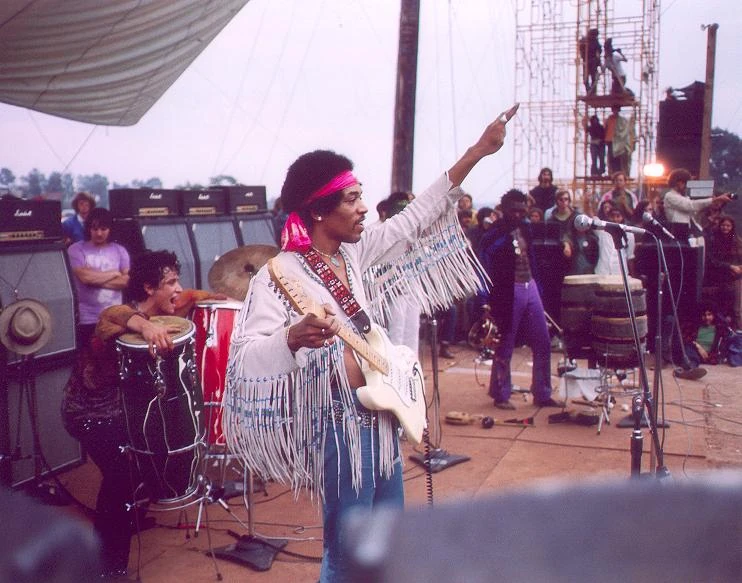'I Thought It Was Beautiful'
Saturday, November 12, 2016 / 12:23 PM
When Jimi Hendrix took the stage the morning of August 19, 1969, at Woodstock, he launched into a guitar solo of the "Star-Spangled Banner." It was unrehearsed, but not new — he's played the anthem on stage plenty of times; on that Monday morning, he was filling time. Delay after delay had pushed his set and by Monday, a large part of the crowd had left. Not that that took away from the power of the moment: if you listen closely to the live recording, it's both gritty and pure and, I would argue, patriotic at a time when patriotism was being questioned.
Some people called it disrespectful, but what I don't think they got was that, in those four minutes, the "Star-Spangled Banner" was more than just a song. Hendrix made the National Anthem an anthem for a generation of people who felt that their country didn't care about them, a country that was drafting them to war to die. And if you listen carefully to the way Hendrix jumps from fret to fret, interrupting his own interruptions with Taps, using (some say, overusing) the whammy bar and wah-wah pedal in a way that's distinct to his sound, you'll hear imperfection that tells a story people weren't sure how to articulate. At that last note, there's a sustained silence, and then Hendrix launches into E7#9, known as the Hendrix chord, that begins "Purple Haze," a song unambiguously about getting high.
When asked about it later, Hendrix didn't talk about the performance as a protest or a symbol. "I thought it was beautiful," he said. It was.
Because even with the "unpatriotic" interruption, Hendrix remained unapologetic in his art. Because even if it felt like the country was turning against you, the music could still go on. As long as we create — unapologetically — we can change it.
Some people called it disrespectful, but what I don't think they got was that, in those four minutes, the "Star-Spangled Banner" was more than just a song. Hendrix made the National Anthem an anthem for a generation of people who felt that their country didn't care about them, a country that was drafting them to war to die. And if you listen carefully to the way Hendrix jumps from fret to fret, interrupting his own interruptions with Taps, using (some say, overusing) the whammy bar and wah-wah pedal in a way that's distinct to his sound, you'll hear imperfection that tells a story people weren't sure how to articulate. At that last note, there's a sustained silence, and then Hendrix launches into E7#9, known as the Hendrix chord, that begins "Purple Haze," a song unambiguously about getting high.
When asked about it later, Hendrix didn't talk about the performance as a protest or a symbol. "I thought it was beautiful," he said. It was.
Because even with the "unpatriotic" interruption, Hendrix remained unapologetic in his art. Because even if it felt like the country was turning against you, the music could still go on. As long as we create — unapologetically — we can change it.



0 comments